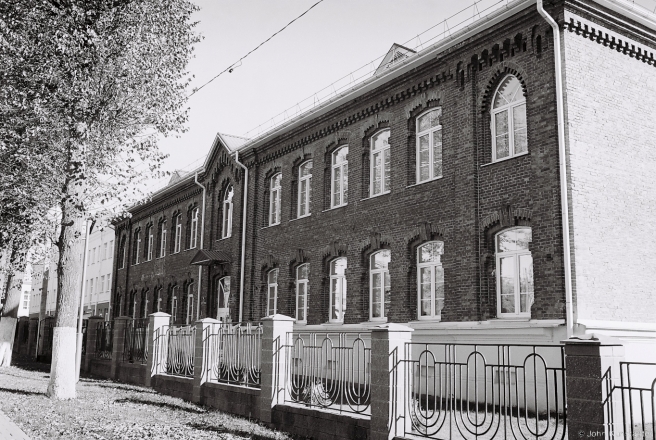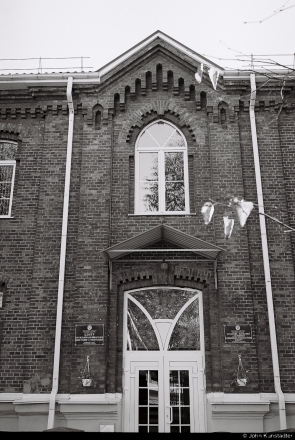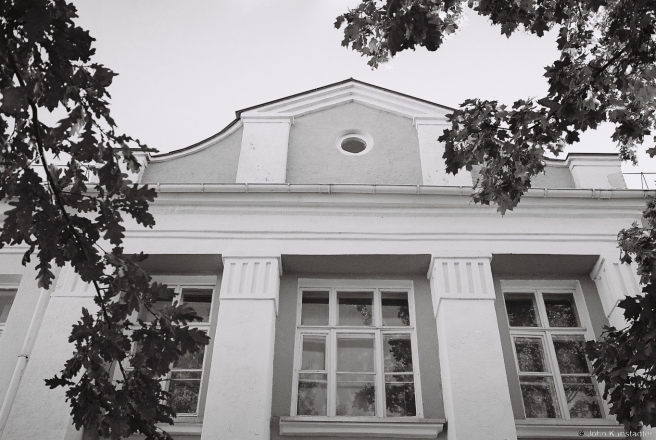Ashmjany 2015 (part I/X).
Now a city of about 15,000 inhabitants, the district center Ashmjany lies closer to Lithuania’s capital Vilnius than to any regional center in Belarus. The first known written mention of Ashmjany dates to 1341; burned to the ground four times by Muscovite invaders in the 16th and mid-17th centuries, the city received Magdeburg rights in 1683.
From the point of view of architectural and cultural heritage, Ashmjany deserves a much longer visit than I was able to give it last year; it would be a pleasure to return to photograph buildings, sites and views which are missing from the following eight days’ photos.
The first series of photos is from the northeastern section of Savjetskaja Street, the city’s main thoroughfare.
Ашмяны 2015 г. (частка I/X).
Ашмянская спадчына заслугоўвае больш часу, чым мог ёй прысьвяціць падчас леташняй вандроўкі.
Buildings along northeastern section of Savjetskaja Street.
Дойлідства ўздоўж паўночнай часткі вул. Савецкай.
Typical brick construction in a transitional neo-Romanesque and proto-art nouveau style from the end of the 19th century.
Тыповая местачковая камяніца ў пераходным стылі з рысамі неараманскага й протамадэрна.
Ashmjany state college of agro-economics. The building appears to be in a 1960s Soviet style.
Ашмянскі дзяржаўны аграрна-эканамічны каледж у стылі 60-ых гадоў (?).


